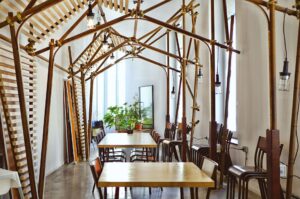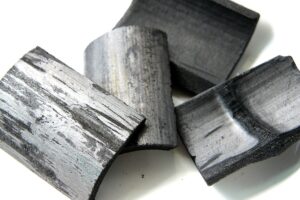In modern interior design and architecture, acoustic comfort is becoming as important as visual aesthetics. As spaces like open-plan offices, auditoria, recording studios and hospitality zones demand both sound performance and sustainable materials, the emergence of natural bamboo acoustic panels (12–50 mm thick) offers an appealing solution. These panels combine engineered bamboo composite technology with acoustic functionality—allowing designers to reimagine how materials contribute to sound-optimized spaces.
What Are Natural Bamboo Acoustic Panels?
Natural bamboo acoustic panels are composite panels made with bamboo‐based laminated skins and engineered core or overlays designed to control sound absorption, transmission and reverberation. According to specification data, one product line is described as: “Natural Bamboo Acoustic panels (thickness 12 mm to 50 mm).”
The technical material lists performance features including “thermal and sound insulation” as one of the material properties.
While the specification sheet is focused on a broad range of bamboo composite products, the acoustic panel variant falls into the thicker panel category (12-50 mm), suitable for structural or semi-structural wall and ceiling applications with acoustic benefit.
Key Properties Relevant to Acoustics and Material Performance
Here are the salient properties of the bamboo acoustic panels (12-50 mm) and how they support sound-optimized design:
Thickness range: 12 mm to 50 mm. This range allows significant mass and depth, which is useful for acoustic control.
Light weight but high performance: The composite nature allows the panels to have lower density than equivalent heavy materials yet maintain stiffness and stability. For example, the bamboo honeycomb sandwich panel variant shows densities around 267 kg/m³ at 22 mm thickness.
Sound and thermal insulation: The specification lists “thermal / electrical / acoustic insulation” among material benefits.
Dimensional stability and durability: Described as moisture resistant, termite proof, non-fungus, and usable in demanding environments. These durability aspects ensure that acoustic panels stay effective over time.
Natural bamboo aesthetic: Using bamboo skins gives a warm, natural look that fits contemporary design themes, adding an aesthetic benefit to acoustic performance.
Applications in Sound-Optimized Spaces
Designers and architects can deploy these natural bamboo acoustic panels in a variety of acoustically sensitive contexts:
Auditoriums, lecture theatres and performance halls: Where controlled reverberation, sound clarity and aesthetic finish matter. The panel thickness and material mass support acoustic absorption or transmission control.
Recording studios and broadcast rooms: The combination of sound insulation and finish quality allows for high-end interior fit-out where both acoustic isolation and design matter.
Open-plan offices and hospitality spaces: To reduce noise spill, echo and improve comfort while maintaining high-quality aesthetic surfaces—these panels can function as wall/ceiling panelling or baffles.
Hotels, restaurants and lounges: Where the dual goals of design and sound comfort are important. The bamboo acoustic panel provides a natural finish and acoustic benefit.
Education and healthcare settings: Spaces where speech intelligibility, background noise control and visual quality are all significant. The panels’ durability and hygiene-friendly properties (non-fungus, termite proof) are also advantageous.
Advantages of Natural Bamboo Acoustic Panels
Sustainable material choice: Bamboo is a rapidly renewable resource and choosing bamboo-based panels aligns with eco-friendly design imperatives.
Acoustic performance plus design: These panels merge usefulness (sound control) with aesthetics (natural bamboo finish) enabling dual-purpose design.
Durable and stable material: Resistant to moisture, pests and fungal degradation—important in long-term installations.
Versatile thickness options: With a 12–50 mm range, the panels can be selected to match different acoustic targets (absorption, isolation, decor).
Reduced weight compared to traditional dense materials: Easier to handle and install, reducing load on structure and simplifying assembly.
High build quality and surface finish: Engineered bamboo composite construction supports quality appearance and finish options.
Considerations and Potential Limitations
Acoustic performance specification may vary: While listed as acoustic insulation, actual absorption coefficients, transmission loss data and low-frequency performance must be confirmed via test data.
Installation and detailing matter: For acoustic benefit, panel fixings, joints, edge detailing and backing/substrate design are critical. Simply replacing a panel without design will not guarantee performance.
Cost may be higher: Given the engineered nature and premium finish/renewable material, cost per square metre may exceed standard single-purpose acoustic panels; value comes from combined aesthetics + performance.
Thickness selection trade-offs: Thicker panels (towards 50 mm) take more depth and may reduce usable floor/ceiling space; designers must balance panel depth with room dimensions and aesthetic goals.
Finish expectations: The bamboo finish may vary in grain and tone, and may require sealing or protective finish depending on location (e.g., high-traffic zones, moisture prone areas).
Acoustic metrics management: For high-grade acoustic use (e.g., recording studios) additional acoustic design (cavity behind panel, perforation, absorbent backing) may be required beyond just the panel.
Frequently Asked Questions (FAQs)
Q: What thickness should I choose for acoustic panels in a lounge or restaurant?
A: For general background noise control and reverberation reduction, panels in the lower part of the range (12-20 mm) may suffice if placed strategically. For higher demands (studio, auditoria) thicker panels (30-50 mm) may deliver better performance when combined with acoustic backing.
Q: Are these panels suitable for humid or damp interiors like spas or pool-side bars?
A: Yes. The panels are described as moisture-resistant, termite proof and fungus resistant. However correct installation (sealed edges, suitable adhesives, ventilation) remains important.
Q: Can the surface be finished/coloured to match design themes?
A: Yes. The engineered bamboo surface is suitable for finishing, painting or polishing. Designers may incorporate varnish, stain or decorative coating to match interiors.
Q: How effective are these panels compared to conventional acoustic boards?
A: While the specification indicates acoustic insulation benefits, specific performance data (like absorption coefficient or transmission loss) for these panels may vary. It is advisable to request test data from the manufacturer or supplier for target acoustic performance.
Q: How sustainable are these panels?
A: Very. Using bamboo (a fast-growing, renewable resource), combined with engineered composite process, supports sustainability goals. Also, the durability and long service life reduce material replacement needs.
Q: Can these panels be installed like traditional wall/ceiling panels?
A: Yes. They behave similarly to panel systems in terms of installation (fixing, securing, finishing). However because acoustic performance often depends on backing/hollow cavity, some acoustic design adjustment may be required.
Q: What maintenance is required for these panels?
A: Regular cleaning (dust), inspection of joints/fixings especially in high use zones. Finish re-coating might be required if exposed to abrasion or heavy wear. Because the material is durable, major upkeep is minimal relative to traditional wood/fabric panels.
Conclusion
Natural bamboo acoustic panels (12-50 mm) represent a powerful convergence of design aesthetics, acoustic functionality and sustainability. For interior spaces where sound control is as important as visual and environmental credentials, these panels provide a compelling option. When specified correctly—with appropriate backing, installation detailing and acoustic design—they can deliver excellent performance and a refined natural aesthetic.
For designers seeking to re-imagine interior acoustics with materials that align with green building ambitions, natural bamboo acoustic panels offer both form and function. By choosing them thoughtfully, spaces can achieve comfort, clarity and character.






